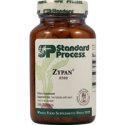Table of Contents
Low Stomach Acid
Hydrochloric Acid products for Low Stomach Acid—Decreased Hydrochloric Acid (HCl):
I’ve noticed that there has been a huge increase in symptoms associated with decreased stomach acid around our nation. Somehow the bacteria have destroyed the ability (at least in part) of people to digest their foods properly and the amount of product flying off my shelves that contains betaine hydrochloride has just increased sharply.
Other predisposing factors that increase the need for more hydrochloric acid products for low stomach acid are the ingestion of fast foods, salt free diets, antacid use, excessive vomiting/diarrhea, eating disorders, pregnancy, the aging process (as we age our production of HCl decreases), stress, excess nervousness, congenital weaknesses and the ingestion of fish oil capsules (wrong type of fish or taking the product when you don’t need it—yes, this product is over-recommended.)
Blood Type A people, especially those who eat animal-based protein in excess, often have issues with low hydrochloric acid/low stomach acid, and as Blood Type A people age, their production of HCl decreases more so than other blood types which is why they often need extra digestive enzymes in their nutritional protocols.
In this article I’m going to list the symptoms of low stomach acid, I’m going to talk about some product options for low stomach acid you can get at your local health food store and of course about the supplements carried by health care practitioners (that, in my opinion are better and which can be monitored as part of your consult) and a simple test that you can do at home to figure out a dosage if you don’t want a consult.
Now, many of you are on antacids for GERD and other digestive disorders. I’ve talked about this before. Antacids are not the way to go. . .they can cause osteoporosis, a host of other problems and eating for your blood type heals most of these cases “needing antacids” within three months. Antacids also prevent the absorption of nutrients your body needs to maintain good health.
So, let’s list those symptoms of decreased or low stomach acid:
- Adrenal exhaustion and insufficiency
- Adult acne
- Allergies to foods
- Anemia, pernicious
- Appetite, excessive
- Asthma
- Atherosclerosis
- Autoimmune diseases
- B12 Deficiency
- B6 Deficiency
- Bacterial Dysbiosis
- Broken capillaries
- Calcium deficiency leading to insomnia, cramps, nervousness
- Chronic infections
- Chronic weakness
- Conjunctivitis
- Constipation (with liver/gallbladder involvement)
- Delayed gastric emptying (food feels like it’s just sitting there in your stomach for hours)
- Diabetes
- Diarrhea (with inflammatory bowel disease) or chronic diarrhea
- Dizziness
- Drowsiness after meals
- Dysbiosis (bowel flora is out of balance)
- Eczema, psoriasis or the history of eczema
- Emaciation (a protein deficiency)
- Environmental Chemical Sensitivities
- Feeling too full
- Flatulence in general
- Food cravings for sour foods
- Hair dry and brittle (nails too)
- Hair falling out
- Halitosis
- Heartburn/GERD/Acid reflux
- Immunity decreased
- Intestinal damage
- Irritable Bowel Syndrome (IBS)
- Leaky gut
- Loss of taste for meats
- Malabsorption/maldigestion
- Meal related bloating or burping
- Mucoid Colitis
- Nails, thin/weak or dry and brittle
- Obesity
- Offensive smelling stool
- Pallor
- Pimples turning into boils (can also indicate low exocrine pancreas function)
- Poor memory
- Poor muscle tone
- Rheumatoid Arthritis
- Swollen tongue
- Thyroid problems
- Ulcer like pains
- Vision disturbances
- Vitamins B3 (Niacin) deficiency—also called Pellagra
- White spots on nails
- Yeast/Candida
Products that help to increase hydrochloric acid in the stomach include:
- AF Betafood (For people with hypoglycemic, liver and gallbladder symptoms)
- Betaine Hydrochloride (HCl) (This is included in many Standard Process Products mentioned below and is used for problems associated with digestive disorders associated with immediate meal consumption)
- Cayenne pepper
- Celtic Sea Salt
- Digestive Enzymes (More so recommended for Blood Type A people)
- Folic Acid
- Inositol Hexaniacinate: Inositol hexaniacinate is a form of vitamin B3 (niacin). This dietary supplement may help reduce bad, or LDL cholesterol levels in people with hypercholesterolemia. Unlike niacin, inositol hexaniacinate is typically not associated with the niacin flush, the most common side effect of niacin, but inositol hexaniacinate should not be taken if you have any liver damage.
- Multizyme
- Pancreatin PMG
- Phosfood drops (More so for people who also have gout or who create stones)
- Proteofood
- Vinegar (Not recommended for blood types O and A because it irritates tissues and increases mucous production and phlegm.)
- Vitamin B Complex (Getting the correct brand for your body is important.)
- Zypan (Developed in 1958. Used with exocrine pancreas function and when not digesting carbs correctly and for digestive challenges that seem to manifest several hours after eating) See my handout on The Zypan Test

Helpful Links and References for Low Stomach Acid and GERD:
- Antacids: https://naturalhealthtechniques.com/specificdiseasesantacids_problems_associated.htm
- Asthma: https://naturalhealthtechniques.com/specificdiseasesasthma.htm
- Celtic Sea Salt: https://naturalhealthtechniques.com/fun-facts-about-salt.htm
- Help for GERD: https://chriskresser.com/get-rid-of-heartburn-and-gerd-forever-in-three-simple-steps/
- Standard Process Zypan Brochure: https://www.standardprocess.com/display/displayFile.aspx?docid=191&filename=/Public/Lit/TabSheets/zypan8475.pdf
- Read more on Inositol Hexaniacinate: https://www.livestrong.com/article/311553-inositol-hexaniacinate-side-effects/#ixzz1ovgwspFE
- Vitamin B12 Deficiency: https://naturalhealthtechniques.com/vitamin-b-12-cobalamin.htm
- Vitamin B6 Deficiency: https://naturalhealthtechniques.com/vitamin-b6-pyridoxine.htm
- Yeast Tactics: https://naturalhealthtechniques.com/specificdiseasesyeast_tactics1.htm
- Standard Process Zypan for Low Stomach Acid: https://www.standardprocess.com/display/StandardProcessCatalog.spi?ID=164